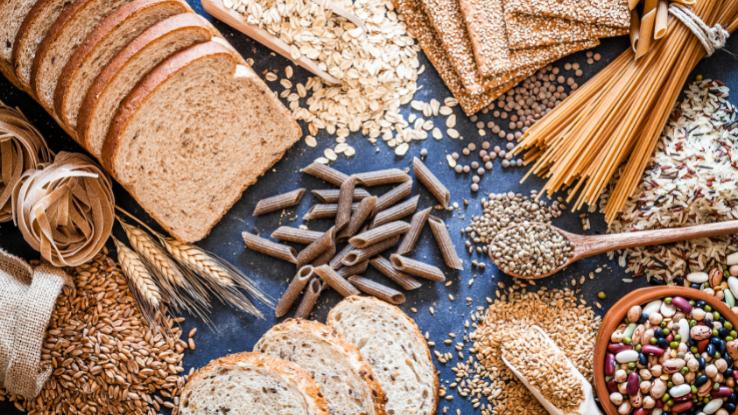7 Day Indian Diet Plan for Type 2 Diabetes

In the United States, the average person consumes only about 10-15 grams of fiber per day. And that's not even half of the official recommendation. Along with protein, carbohydrates, and essential fats, fiber is an integral part of a healthy diet. So, what makes it essential?
Unlike other food components, fiber is indigestible. Although it is not absorbed by the body, fiber provides many health benefits, from maintaining bowel health to controlling blood sugar levels. With this in mind, developing a high-fiber diet plan is a great idea for folks with particular health needs. Here, we'll review which foods to eat and how to incorporate the right amount of fiber into your diet while avoiding the common pitfalls associated with high-fiber regimens.
As you may know, there are two types of dietary fiber — insoluble and soluble. The difference is simple: soluble fiber partially dissolves in water, while insoluble doesn't. While neither type of fiber is digestible, soluble fiber does undergo some changes as it travels through one's digestive tract.

To make the most of a high-fiber diet, one should incorporate both types of fiber into their plan, namely because they provide different health benefits. For instance, diverticulitis is a common disease that causes the colon to develop small pouches, which become painful and inflamed. According to the Harvard School of Public Health, eating a diet high in insoluble fiber is believed to lower the risk of diverticulitis by about 40 percent.
Benefits of a High Fiber Diet
Most people have heard that fiber should be incorporated into their diet, but its benefits may still surprise many folks. For example, eating foods high in soluble fiber can help lower cholesterol levels and, as a result, the risk of experiencing heart disease.
Moreover, a diet high in both insoluble and soluble fiber is vital for people who have, or are at high risk of developing, diabetes. According to the Mayo Clinic, increasing soluble fiber in one's diet can help control blood sugar levels by slowing down the absorption of sugar. The chances of developing type 2 diabetes also decrease in people who eat a diet high in insoluble fiber.
Although most people will experience an occasional bout of constipation, elderly folks may encounter it more frequently, so a high-fiber diet may be beneficial as it can decrease the chances of constipation. Another benefit? A high-fiber diet may help with weight loss since eating fiber-rich foods can help dieters feel full faster and, therefore, eat less.
Tips for Crafting a Successful High-Fiber Diet
When creating a high fiber diet plan, several tips can help make the change easier and reduce the likelihood of common pitfalls. First, it is crucial to know how much dietary fiber to consume. According to the University of Maryland Medical Center, most adults should eat a minimum of 25 to 40 grams of fiber each day.
Selecting Good Sources of Fiber
First up: insoluble fiber. Great sources of insoluble fiber include various fruits, like apples and raspberries, as well as vegetables, like broccoli and carrots. When choosing your daily fruit and vegetables, keep in mind that the highest fiber content will be located in the skin and pulp of vegetables. Root vegetables and leafy greens — carrots, potatoes, kale and spinach — are all solid high-fiber choices.
So, what about soluble fiber? Foods made from whole grains, such as bread, pasta, and oats, are good choices when it comes to crafting a daily high-fiber diet plan, namely because wheat bran, which is part of the grain, has a very high fiber content. Other foods high in soluble fiber include barley and legumes, such as peas, lentils, and beans.
Another way to add more fiber to one's diet? Trade your morning glass of fruit juice for a piece of whole fruit — skin and all. You'll not only get more fiber, but you'll likely consume less calories.
Common Pitfalls Associated With High-Fiber Diets
Even when eating healthy, too much of a good thing can have negative consequences. Since fiber is not digested, overeating it — or eating too much of it quickly — can lead to bloating and gas. Some people may also develop diarrhea if they overeat fiber. To mitigate this side effect, fiber intake should be increased gradually over the course of six weeks. This will allow one's body time to adjust.
Another reason to increase your fiber intake slowly? A sudden increase in fiber may lead to stomach cramps and other intestinal discomforts. When making the gradual transition to a high-fiber diet, remember that even small dietary changes can add up. For instance, swap processed white bread for whole-grain loaves of bread made from oat or wheat bran.
Although it may decrease constipation in some people, increased fiber can also have the opposite effect and lead to constipation or irregular bowel movements. Therefore, it's important to drink plenty of water when one increases their fiber intake.
Resource Links:
- "High Fiber Diet" via National Center for Biotechnology Information (NCBI), U.S. National Library of Medicine
- "Diet and Health: Implications for Reducing Chronic Disease Risk" via Diet and Health, National Center for Biotechnology Information (NCBI), U.S. National Library of Medicine
- "Health benefits and practical aspects of high-fiber diets" via The American Journal of Clinical Nutrition
- "The Health Benefits of Dietary Fiber" via Nutrients, National Center for Biotechnology Information (NCBI), U.S. National Library of Medicine
- "Dietary fibre in foods: a review" via J. Food Science Tech., National Center for Biotechnology Information (NCBI), U.S. National Library of Medicine
MORE FROM SYMPTOMFIND.COM
7 Day Indian Diet Plan for Type 2 Diabetes
Source: https://www.symptomfind.com/health/high-fiber-diet-plan-tips?utm_content=params%3Ao%3D740013%26ad%3DdirN%26qo%3DserpIndex
0 Response to "7 Day Indian Diet Plan for Type 2 Diabetes"
Post a Comment